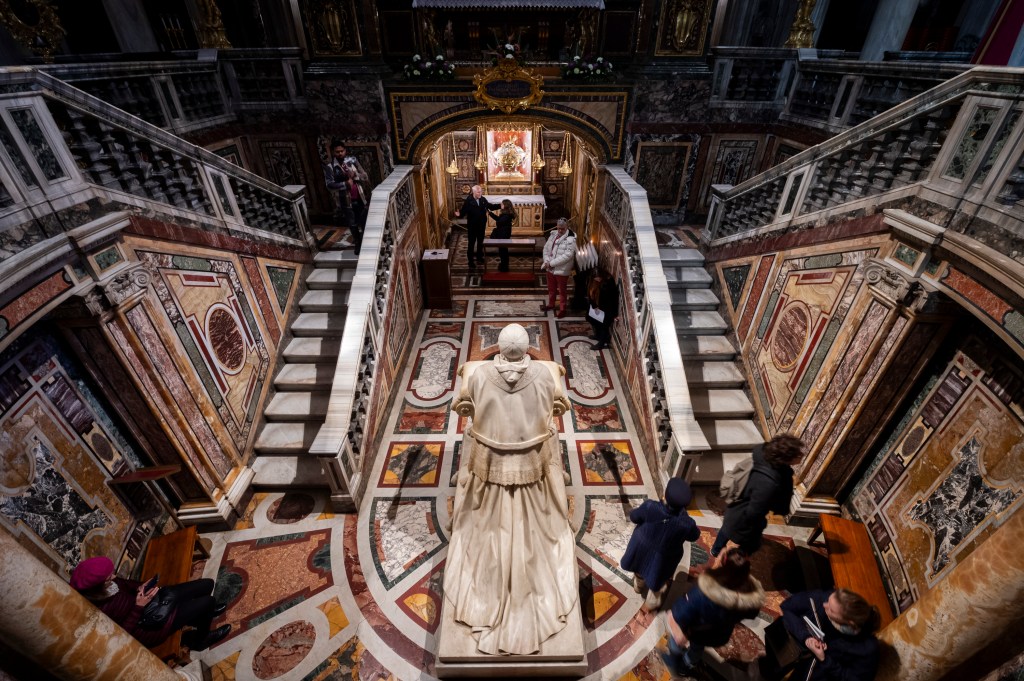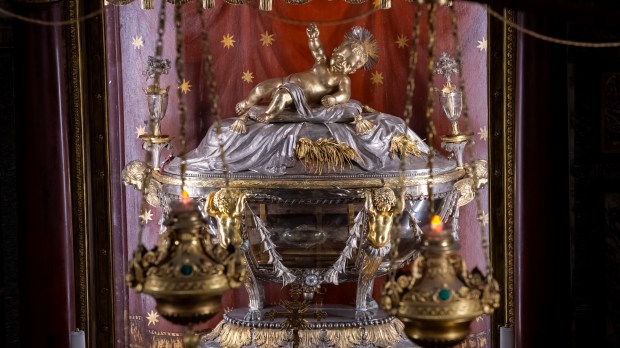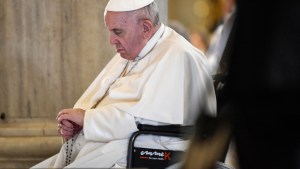The Basilica of St. Mary Major is one of the four major papal basilicas in Rome and one of the most ancient shrines dedicated to Our Lady. If this did not already make this church an important pilgrimage stop, during the Christmas season Catholics and tourists are even more keen to visit it, as beneath its ornate altar is a reliquary containing five fragments of the manger upon which Baby Jesus was laid after his birth.
From Bethlehem to Rome, these pieces of wood have traveled a long way in troubled times and have been in the Basilica since the mid 7th century. Aleteia spoke to Monsignor Piero Marini, Vicar of the Archpriest of St. Mary Major and guardian of the Holy Crib, about these relic’s humble beginnings and the message they still bring today.
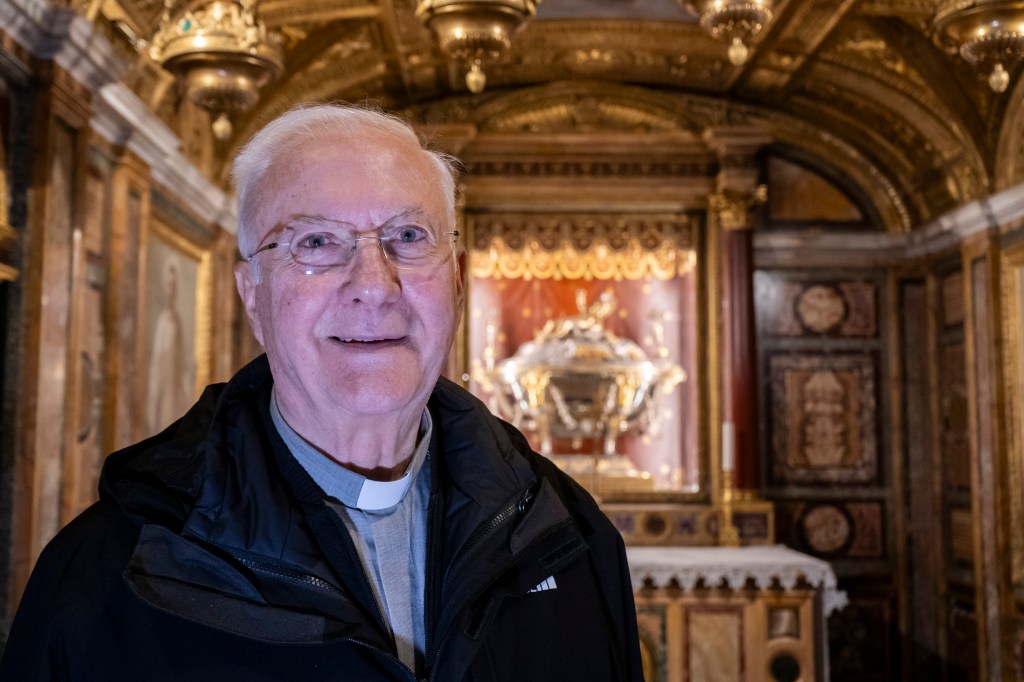
What is the relic composed of ?
Mgr Piero Marini: The Holy Crib relic is made up of five pieces of wood that come from a sycamore tree, which grows in Palestine and is like the one Zacchaeus climbed. Four of the wood pieces probably formed two “Xs” that stood on either side of the crib and then the fifth piece was put in the middle to hold them together. The pieces suggest that they made up an object upon which straw was placed for animals.
These fragments are what’s left after 14 centuries here. The pieces were probably longer and bigger before, but they went through a lot of vicissitudes.
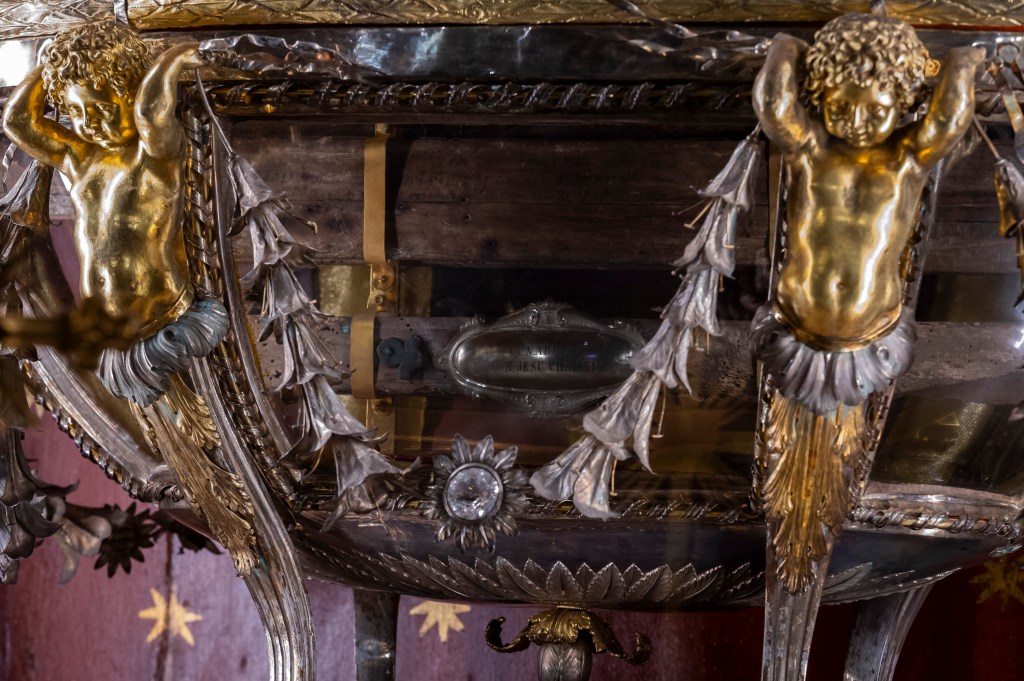
How do we know that these fragments are from Jesus’ manger?
Mgr Piero Marini: When the holy crib was mentioned I would smile because I thought it was one of those many stories we hear. But no, by studying the documentation we see that these fragments do go back to Bethlehem. We have two important testimonies. The first, the oldest, is from Origen, who was a theologian from Alexandria. He wrote that the relic of the holy crib was preserved in Bethlehem around the year 210 or 220. It is an extremely important indication.
The second historical indication we have is from St. Jerome, who went to Palestine and stayed there 35 years. This was around the year 400. Christians were still going to the East and there was an influx of pilgrims in the Holy Land. St. Jerome says that from time to time he had to accompany pilgrims to see the holy cave and the holy crib where the Lord had been placed. So this is the second testimony, besides Origen’s, but there are then others as well.
In the face of this information I became less incredulous, compared to the beginning when I was asked to be the guardian of the sacred crib. Now I just venerate this relic and look at the humility with which the Church and faith in our Lord began.
What witness does this relic bear today for the people who visit it?
Mgr Piero Marini: This relic points to the poverty with which the Church began, with which the Church should always measure itself in history, even if that has not always been the case. The Lord was born and they put him there, on the straw, where the animals were, because he had nothing. Then the Poor Man ended up on the cross, and although it is true that there is the resurrection, humanity in the Lord has lived through experiences of extreme poverty. That’s why St. Francis had insisted on the humanity of the Lord; he emphasized this poverty that is necessary for the Church.
People can come here and contemplate and meditate on these pieces of wood knowing their history and what they testify.
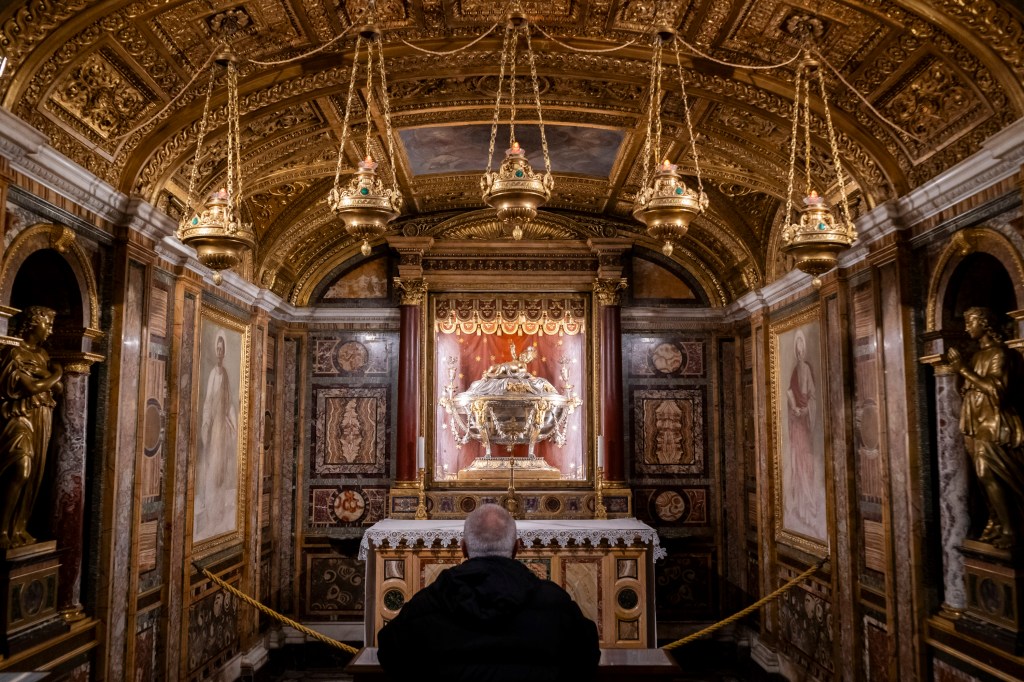
How did these fragments arrive in Rome ?
Mgr Piero Marini: In 636 Jerusalem was surrounded by the Saracens armies. Due to this, the Patriarch of Jerusalem, Sophronius, could not celebrate in Bethlehem where the holy crib was. Faced with this situation, he took the pieces of the holy crib and sent them to Rome, where there was Theodore I, a pope of Palestinian origin. They wanted to save the pieces, as they were a precious relic for them.
How were they then preserved?
Mgr Piero Marini: The relic came to St. Mary Major and caused it to be called St. Mary “ad praesepe,” meaning St. Mary of the crib. It was also called the Bethlehem of Rome or the Bethlehem of the West. This Basilica was the perfect place to keep the cradle because it was the first shrine dedicated to the Virgin Mary.
Then in the 700s, at the time of Pope Adrian I, they built an oratory on the right side of the basilica where this relic of the holy crib was kept. For many centuries all the pilgrims who came to Rome from northern Europe came to visit it, as it was one of the most important relics in Rome.
And after?
Mgr Piero Marini: In the mid 1500s this oratory was incorporated into a chapel inside Santa Maria Maggiore, and the relic was kept there in an urn that is said to have been very beautiful. There were also processions and the relic was displayed on the main altar at Christmas.
Then in the late 1700s the Napoleonic troops arrived and took away the urn and left only the wooden pieces. A few years later in 1802 the reliquary we see today in gold and silver was commissioned by Pius IX, who was very devoted to this church. The reliquary was made by Giuseppe Valadier who came from a family of Roman goldsmiths. Pius IX also had this hypogeum built, where the relic is still located, and made a statue of himself kneeling to be placed in front of it.
A few years ago then, in 2019, they restored the pieces of wood and sent a small piece of the fragments to Palestine as a relic.
